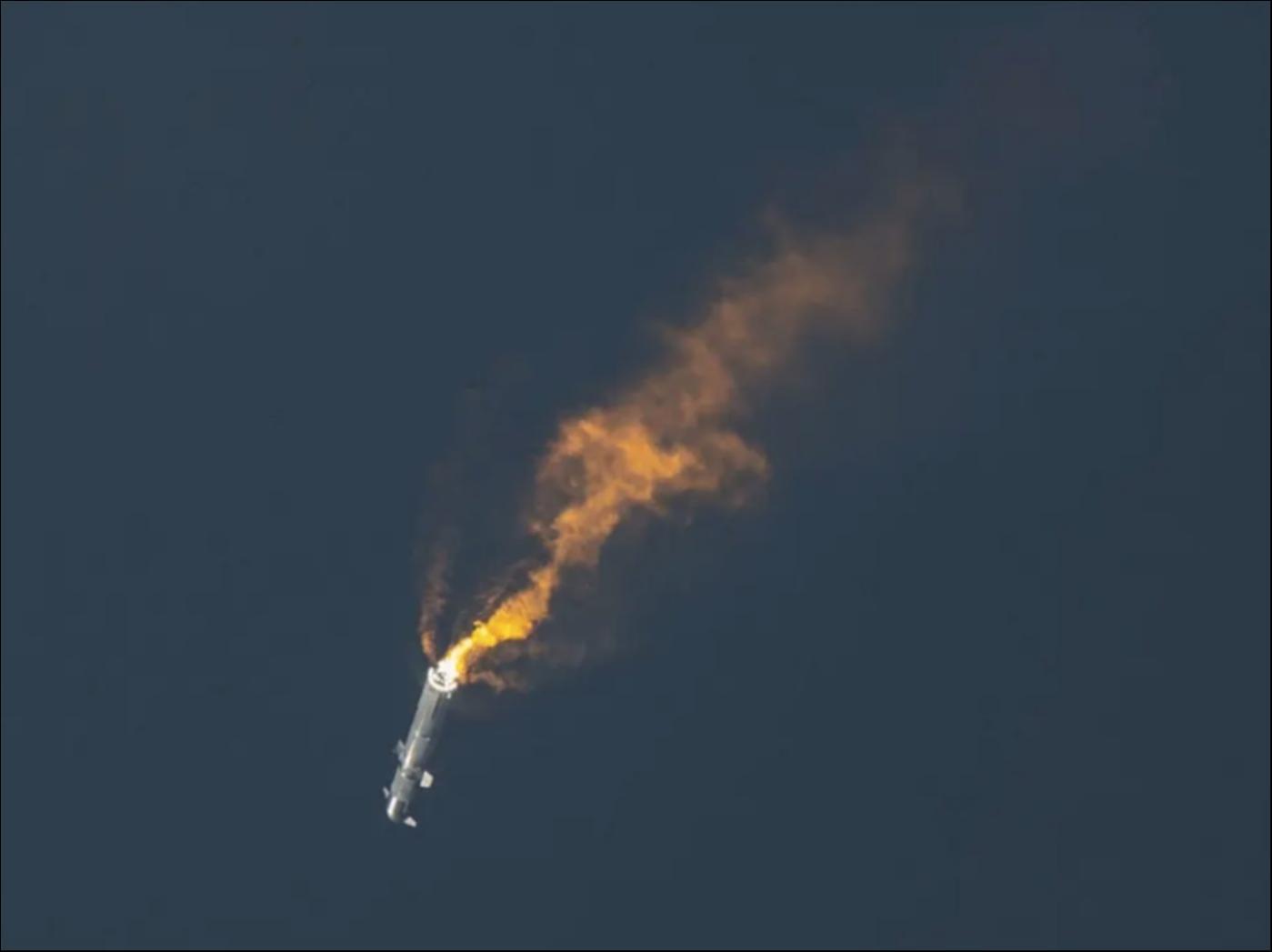
When Portuguese navigator Bartolomeu Dias saw a promontory in 1488, he named it Cape of Storms for the stormy weather and rough seas he encountered there. However, Portuguese King John II renamed it Cape of Good Hope, because the discovery, which ascertained the southern limits of the African continent, was a good omen thatIndiacould be reached by sea from Europe. Some sources attribute the present name to Dias himself.
In just four minutes, Starship, worth hundreds of millions of dollars, went up in flames. Last Thursday, engineer and entrepreneur Elon Musk launched it in an orbital test flight from Texas, the United States. The rocket lift off the launch pad kind of a triumph but it exploded in mid-air, leading to the grounding of the program by the Federal Aviation Administration for the time being until further evaluation.NASA last year awarded SpaceX $2.9 billion specifically for Starship, which isenvisioned as the lunar lander for the agency's Artemis program.
They say that a disaster is a blessing in disguise. It may sound like a philosophical statement or just a cliché, but in the case of Elon Musk’s roller-coast ride last week, it is completely right. It seemed like a failure, but it was a step forward.
Starship, the biggest rocket in history, could be the vehicle to get Earth inhabitants to Mars. Not only were Americans thrilled about the launch, Chinese netizens were also excited about the colonization of the red planet after a successful liftoff. They were waiting eagerly for the live streaming of the launch, the biggest show or a suspense movie of the year. It was the talk of the town across China last Monday.
The highly-anticipated launch was postponed to Thursday due to a technical glitch. Prior to the actual launch, Musk, SpaceX CEO,had said that if Starship was “far enough away from the launchpad before something goes wrong, then I think I would consider that to be a success,” adding: "Just don’t blow up the launchpad."
Starshipis the centerpiece of Musk's eventual plans to head to Mars. While the spacecraft remains in early testing, it is NASA's choice of lander to send Artemis astronauts tothe moonno earlier than 2025.
Musk's hopes of flying to Mars are undimmed.In 2011, he revealed that he planned tosend humans to Marsin 10 to 15 years. Three years later, he noted thereusable rocket would be essential for humans to colonize the Red Planet.
"The reason SpaceX was created was to accelerate the development of rocket technology, all for the goal of establishing a self-sustaining, permanent base on Mars," Musk said. "And I think we're making some progress in that direction not as fast as I'd like."
In 2016, Musk unveiled his technological plan for getting to Martian, whose final goal was to create a self-sustaining colonyon Mars in the next 50 to 100 years.
In the following year, Musk published a paper, describing afuture Red Planet city of a million peopleand giving more details about how the Interplanetary Transport System would transport cargoes and humans to the colony.
In February 2022, Musk followed up by saying that it may be possible to achieve a launch rate of one Starship vehicle every six to eight hours, and one Super Heavy rocket every hour, on missions that would send up to 150 tons of payload to orbit. Such a frequent launch rate would cut costs, Musk said, making Mars settlements more financially feasible.
Two days after the inaugural launch of Starship, Musk explored the possible reason for the failed launch. “3 months ago, we started building a massive water-cooled, steel plate to go under the launch mount. Wasn’t ready in time & we wrongly thought, based on static fire data, that Fondag would make it through 1 launch. Looks like we can be ready to launch again in 1 to 2 months,” Musk twitted on April 22.
“Still early in analysis, but the force of the engines when they throttled up may have shattered the concrete, rather than simply eroding it. The engines were only at half thrust for the static fire test,” he added.
Chinese scientists saw the gap between China and the United States in the space industry. SpaceX hopes to increase “the frequency of Starship launches in order to bring down costs and make the launches of Starships as frequent as airline flights… if the new reusable human landing system works, that would be a breakthrough in technology,” five experts with Guangzhou Zhongke Aerospace Exploration Technology Co., Ltd and the Chinese Academy of Sciences were quoted as saying in an article published in Aerospace Science, a monthly publication under the direct leadership of China Aerospace Science and Technology Corporation (CASTC). CASTC, a state-owned enterprise, is the main contractor to China’s space program, which designs, develops and manufactures a range ofspacecraft andlaunched vehicles.
The United States, China and Russia are engaging in a race in terms of space stations. China launched two lab modules – Wentian (“Quest for the Heavens) and Mengtian (Dreaming of the Heavens) to the permanent space station in 2022. To date, scientific experiments in the modules are going smoothly. In addition, China and the European Space Agency are working on 10 joint space station projects together.
The experts stressed in another article published in Aerospace Science that only SpaceX in the world is able to recover rockets and launch them into the orbit again. China should be fully aware of its gap with the U.S. peers and catch up by achieving breakthroughs in reusable rocket technologies.
Let’s hope there will be a successful Starship launch in one or two months. If not, let's keep hoping until it succeeds. As the tale of navigator Dias shows, a stormy cape cen be a cape of hope for mankind.
本文内容由互联网用户自发贡献,该文观点仅代表作者本人。如发现本站有涉嫌抄袭侵权/违法违规的内容,请发送邮件至 3587015498@qq.com 举报,一经查实,本站将立刻删除。本文链接:https://www.xmnhj.com/h/159068.html

